Related Research Articles

Earl of Caithness is a title that has been created several times in the Peerage of Scotland, and it has a very complex history. Its first grant, in the modern sense as to have been counted in strict lists of peerages, is now generally held to have taken place in favor of Maol Íosa V, Earl of Strathearn, in 1334, although in the true circumstances of 14th century, this presumably was just a recognition of his hereditary right to the ancient earldom/mormaership of Caithness. The next year, however, all of his titles were declared forfeit for treason.
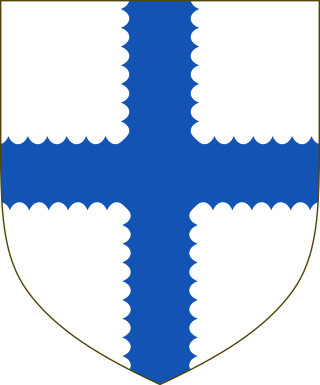
Lord Sinclair is a title in the Peerage of Scotland. According to James Balfour Paul's The Scots Peerage, volume VII published in 1910, the first person to be styled Lord Sinclair was William Sinclair, 3rd Earl of Orkney and 1st Earl of Caithness. However, according to Roland Saint-Clair writing in the late 19th century, William Sinclair's father, Henry II Sinclair, Earl of Orkney, who died in 1420, is the first person recorded as Lord Sinclair by public records.
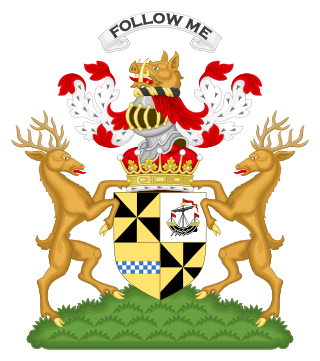
Earl of Breadalbane and Holland is a title in the Peerage of Scotland. It was created in 1681 for Sir John Campbell, 5th Baronet, of Glenorchy, who had previously been deprived of the title Earl of Caithness. It refers to Breadalbane, Scotland, a region of the southern/central Scottish Highlands, within the Grampian Mountains range, archaically spelt Broadalbin.
Archibald Primrose, 1st Earl of Rosebery PC was a Scottish politician.

Clan Sinclair is a Highland Scottish clan which holds the lands of Caithness, the Orkney Islands, and the Lothians. The chiefs of the clan were the Barons of Roslin and later the Earls of Orkney and Earls of Caithness.
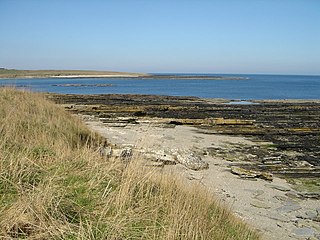
Murkle (Murchill) is a small scattered hamlet, made up of East Murkle and West Murkle located one mile (1.6 km) east of Thurso, in Caithness, Scottish Highlands and is in the Scottish council area of Highland.
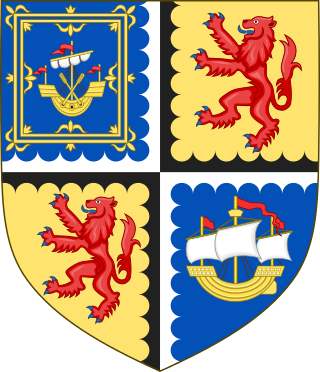
John Sinclair was a Scottish nobleman, 3rd Earl of Caithness and chief of the Clan Sinclair, a Scottish clan of the Scottish Highlands.
John Sinclair, 11th Earl of Caithness was a Scottish noble, Earl of Caithness and chief of the Clan Sinclair, a Highland Scottish clan.
James Sinclair, 12th Earl of Caithness (1766–1823) was a Scottish noble, Earl of Caithness and chief of the Clan Sinclair, a Highland Scottish clan.
The Sutherlands of Kilphedder (Killipheder) were a minor noble Scottish family and a branch of the ancient Clan Sutherland, a Highland Scottish clan. They were seated at Killipheder, in the county of Sutherland, Scotland.

George Sinclair was a Scottish nobleman, the 4th Earl of Caithness and chief of the Clan Sinclair, a Scottish clan of the Scottish Highlands.
John Sinclair, Master of Caithness was a Scottish nobleman.

George Sinclair was a Scottish nobleman, the 5th Earl of Caithness and chief of the Clan Sinclair, a Scottish clan based in northern Scotland.

George Sinclair was a Scottish nobleman, 6th Earl of Caithness, and chief of the Clan Sinclair, a Scottish clan of the Scottish Highlands.

George Sinclair, previously of Keiss, died 1698, was a Scottish nobleman, 7th Earl of Caithness and chief of the Clan Sinclair, a Scottish clan of the Scottish Highlands.

John Sinclair was a Scottish nobleman, 8th Earl of Caithness and chief of the Clan Sinclair, a Scottish clan of the Scottish Highlands.
William Sinclair, 10th Earl of Caithness, was a Scottish nobleman, Earl of Caithness and chief of the Clan Sinclair, a Highland Scottish clan in Caithness.

Patrick Sinclair was a Scottish nobleman and the 9th Lord Sinclair. In The Scots Peerage by James Balfour Paul he is designated as the 8th Lord Sinclair in descent starting from William Sinclair, 1st Earl of Caithness and 3rd Earl of Orkney, but historian Roland Saint-Clair designates him as the 9th Lord Sinclair in descent from the father of the 1st Earl of Caithness and 3rd Earl of Orkney, Henry II Sinclair, Earl of Orkney, who is the first person recorded as Lord Sinclair in public records. Roland Saint-Clair references this to an Act of the Scottish Parliament in which the 4th Lord Sinclair was made Lord Sinclair based on his descent from his great-grandfather, Henry II Sinclair, Earl of Orkney, the first Lord Sinclair. Bernard Burke, in his a Genealogical and Heraldic Dictionary of the Peerage and Baronetage of the British Empire, agrees with the numbering by Roland Saint-Clair and says that Henry Sinclair and William Sinclair were "in reality" the fourth and fifth Lords Sinclair respectively.

Alexander Sutherland, 8th of Duffus was a member of the Scottish nobility and a cadet of the Clan Sutherland.
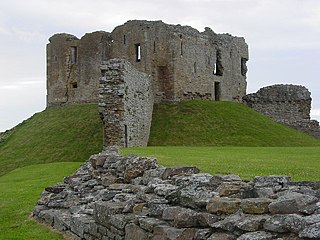
William Sutherland, 9th of Duffus was a member of the Scottish nobility and a cadet of the Clan Sutherland.
References
- ↑ Saint-Clair, Roland William (1898). The Saint-Clairs of the Isles; being a history of the sea-kings of Orkney and their Scottish successors of the sirname of Sinclair. Shortland Street, Auckland, New Zealand: H. Brett. pp. 214 . Retrieved 6 February 2021.
- 1 2 3 Henderson, John W.S (1884). Caithness Family History. Edinburgh: David Douglas. pp. 8-11.